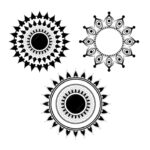Hereditary neuropathies are a group of genetic disorders characterized by damage or dysfunction of the peripheral nerves. These conditions are often inherited in an autosomal dominant, autosomal recessive, or X-linked manner, meaning they can be passed down from one generation to the next. In this article, we delve into the world of types of neuropathy, examining their various subtypes, inheritance patterns, and clinical manifestations.

Charcot-Marie-Tooth Disease: Understanding the Most Common Hereditary Neuropathy
Charcot-Marie-Tooth (CMT) disease, also known as hereditary motor and sensory neuropathy (HMSN), is the most common form of hereditary neuropathy, affecting approximately 1 in 2,500 people worldwide. This progressive condition primarily affects the peripheral nerves, leading to muscle weakness, sensory loss, and foot deformities. CMT can manifest in various subtypes, each with its unique genetic mutations and clinical features.
Genetics and Inheritance Patterns
CMT is genetically heterogeneous, with mutations identified in over 80 genes associated with the disease. It can be inherited in an autosomal dominant, autosomal recessive, or X-linked manner, depending on the specific subtype. Genetic testing plays a crucial role in diagnosing CMT and determining the mode of inheritance, enabling personalized management and genetic counseling for affected individuals and their families.
Hereditary Sensory and Autonomic Neuropathies: Exploring Rare Genetic Disorders
Hereditary sensory and autonomic neuropathies (HSAN) are a group of rare genetic disorders characterized by abnormalities in the sensory and autonomic nervous systems. These conditions typically present with sensory loss, chronic pain, and autonomic dysfunction, such as abnormal sweating or blood pressure regulation. HSAN encompasses several subtypes, each with distinct genetic mutations and clinical phenotypes.
Clinical Features and Management Strategies
The clinical presentation of HSAN varies depending on the subtype and severity of nerve involvement. Management focuses on symptom relief, prevention of complications, and supportive care. This may include medications to manage pain, physical therapy to improve mobility and function, and lifestyle modifications to address autonomic symptoms. Genetic counseling is essential for individuals with HSAN and their families to understand inheritance patterns and make informed decisions regarding family planning.
Familial Amyloid Polyneuropathy: Unraveling a Rare Inherited Disorder
Familial amyloid polyneuropathy (FAP) is a rare hereditary disorder characterized by the accumulation of abnormal protein deposits, known as amyloid fibrils, in various organs and tissues, including the peripheral nerves. This progressive condition can lead to sensory, motor, and autonomic neuropathy, along with multi-organ dysfunction. FAP is caused by mutations in the transthyretin (TTR) gene and typically follows an autosomal dominant inheritance pattern.
Diagnosis and Treatment Approaches
Diagnosing FAP often involves a combination of clinical evaluation, genetic testing, imaging studies, and nerve biopsies. Treatment aims to slow disease progression, alleviate symptoms, and improve quality of life. Therapeutic options may include liver transplantation to halt the production of abnormal TTR protein, medications to stabilize amyloid deposits, and supportive care to manage neuropathic symptoms and complications.
Conclusion
Hereditary types of neuropathy are a diverse group of genetic disorders that affect the peripheral nerves, leading to sensory, motor, and autonomic dysfunction. From Charcot-Marie-Tooth disease to familial amyloid polyneuropathy, understanding the various subtypes, inheritance patterns, and clinical manifestations is crucial for accurate diagnosis and personalized management. Genetic testing, along with advancements in molecular genetics and targeted therapies, continues to revolutionize the diagnosis and treatment of hereditary neuropathies, offering hope for improved outcomes and quality of life for affected individuals and their families.














